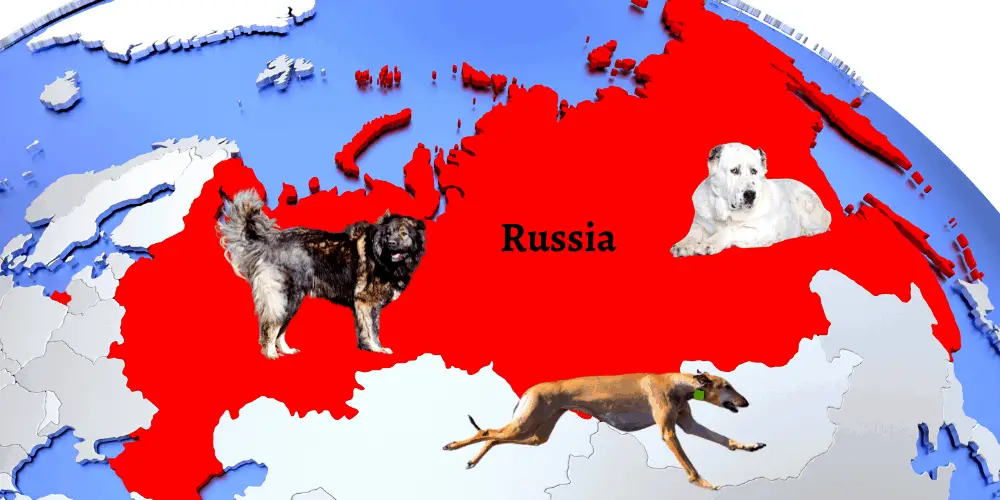There is an interesting and diverse ground of Russian dog breeds coming from the largest country in the whole world.
Terrain can be rough, and weather harsh in Russia, so many are sturdy and strong.
Here is the list of popular Russian dog breeds.
[ Watch the Top 10 Russian Dog Breeds video or Continue Reading the Article ]
1. Anglo-Russian Hound

The Anglo-Russian Hound, officially known as the Russian Harlequin Hound, is a rare breed of dog that is usually only seen in Russia.
A mix of Russian hounds and the English Foxhound, this scent hound is known for its skill-tracking game, including foxes and wolves.
This pack dog is friendly, full of energy, and loves being outside. It is strong-minded, so it needs a firm trainer to control it.
Did You Know?
- This dog howls and isn’t suited for apartment living.
- The Anglo-Russian Hound likes being around people and other dogs.
- The dog is primarily white, so the huntsmen could tell them apart from the quarry they were hunting.
2. Black Russian Terrier
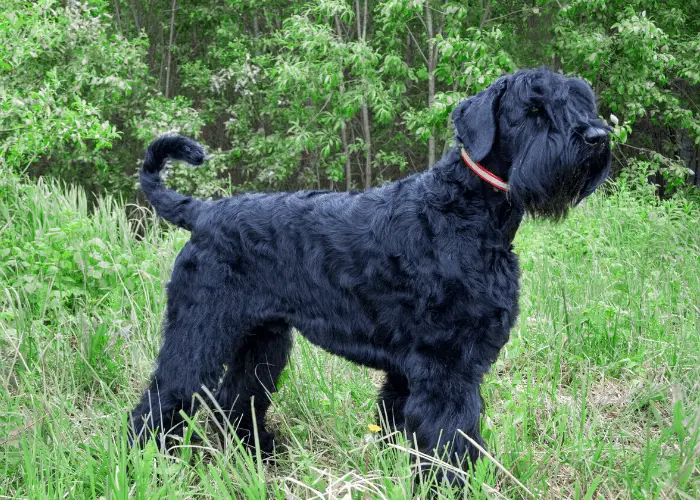
The Black Russian Terrier, commonly called the Chornyi Terrier, is a dog created in Russia during the late 1940s. In the early 1950s, the Soviet government began the first breed standard for the Black Russian Terrier.
It’s a breed of dogs derived from breeding together Giant Schnauzer, Airedale Terrier, Rottweiler, Newfoundland, Caucasian Shepherd Dog, and other breeds for military and working dogs.
This strong, lively, and energetic dog can be a big dog weighing up to 60 kg at full size.
Its strength and stamina will be used in Siberia, where the weather is freezing and harsh. It has a double coat and can be vicious if threatened or attacked.
Did You Know?
- The Black Russian Terrier doesn’t bark.
- It has the nickname The Black Pearl of Russia.
- To be happy and content, this dog must be kept busy with tasks or a job.
- They look like the Giant Schnauzer from Germany.
- The Black Russian Terriers have an approximately 42% incidence of hip dysplasia.
3. Bolonka
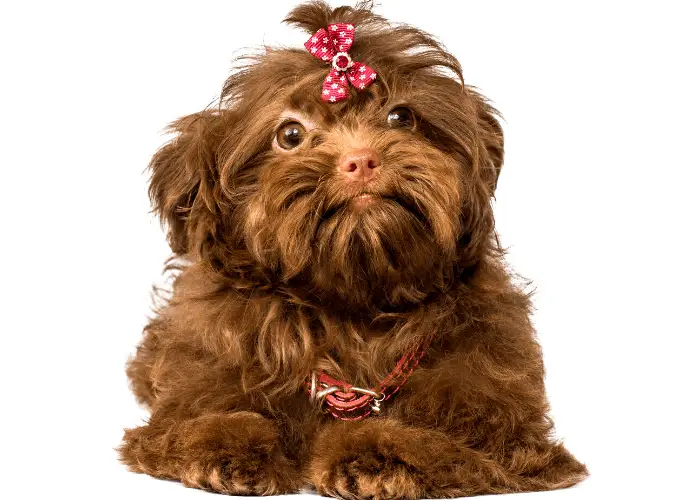
The Russian Tsvetnaya Bolonka, also called the Bolonka, is a rare toy breed of the Bichon type, developed in Moscow and Saint Petersburg from the ancestors of other small dogs like the Bichon Frise, Toy Poodle, Shih Tzu, Pekingese, and French Bolognese.
A playful, curious, and charming lap dog, the Bolonka is a small dog bred to be a loving pet. It has a friendly and comical nature and a bright spirit.
Did You Know?
- The Bolonka was almost extinct until after the Cold War.
- Russkaya Tsvetnaya Bolonka translates to “Russian Colored Lapdog.”
- The Bolonka originated as a gift from Louis XIV of France to Russian nobility.
4. Borzoi
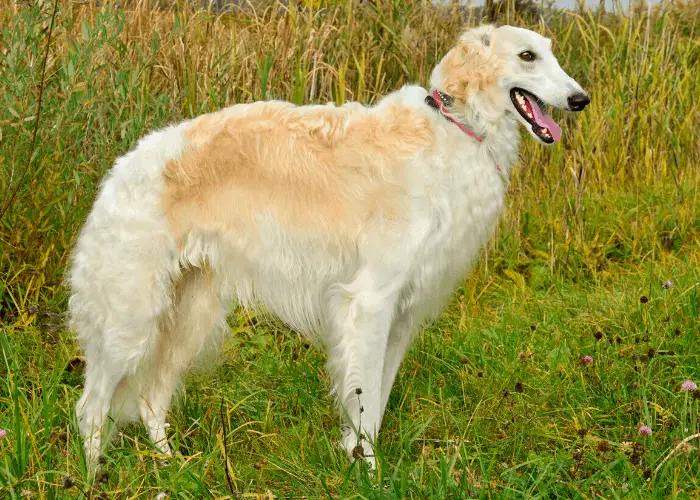
The Russian Borzoi, also called the Russian wolfhound, is a breed of domestic dog. They descended from the sighthound working dogs of people who migrated from Central Asian countries to Russia before the 17th century.
They were used as coursing and hunting dogs and hunted in teams of 3, seeking out rabbits, foxes, and wolves. They were a popular companion for members of royal families in Europe.
They are beautiful to look at, with long legs similar to greyhounds. This dog has a calm and agreeable temperament.
The Borzoi are giant dogs and can easily knock over small children accidentally. They are perfect for homes with older children who understand how to interact with dogs.
Did You Know?
- In full stride, it can reach 36 miles per hour – one of the fastest in the world.
- They shouldn’t be exercised too soon before or after feeding or they can suffer from bloat.
- Borzoi means swift in Russian, which relates to how fast it can run.
- Borzoi was slaughtered during the Russian Revolution because of their association with the Russian nobility.
- Although they have the instinct to chase, they can get along with cats and other small animals if introduced early.
5. Caucasian Shepherd Dog

The Caucasian Shepherd is a large, strong, and excellent guard dog that will protect its owner, family, and territory with all its might.
This large dog breed was bred to watch flocks and protect the home against wild animals in the Caucasus Mountains.
It is also known as Caucasian Mountain Dog, Russian Bear Dog, and Caucasian Ovcharka Dog. They are the oldest group of dogs known, dating back 500 years.
Did You Know?
- The Caucasian Shepherd dog will fight for his territory even against a bear or wolf.
- Caucasian Ovcharka dogs are not for first-time owners as they are challenging to train.
- Caucasian Shepherd dog has a resemblance to teddy bear.
- Caucasian Mountain Dogs can be “gentle giants” with proper training.
- Caucasian Shepherd dogs tend to pick and bond closely with just one family member.
6. Central Asian Shepherd Dog

The Central Asian Shepherd Dog is an ancient livestock guardian dog breed. Traditionally, the large dog was used to protect sheep and goat herds and guard duty. It is confident and intelligent and makes a fearless guard dog.
Did You Know?
- The Central Asian Shepherd Dog has a long life span and can live to 17 years or more.
- Nomadic tribes use this dog these days to protect their family and livelihood.
- Evidence supporting their long history is proven in old artifacts.
7. Chortai
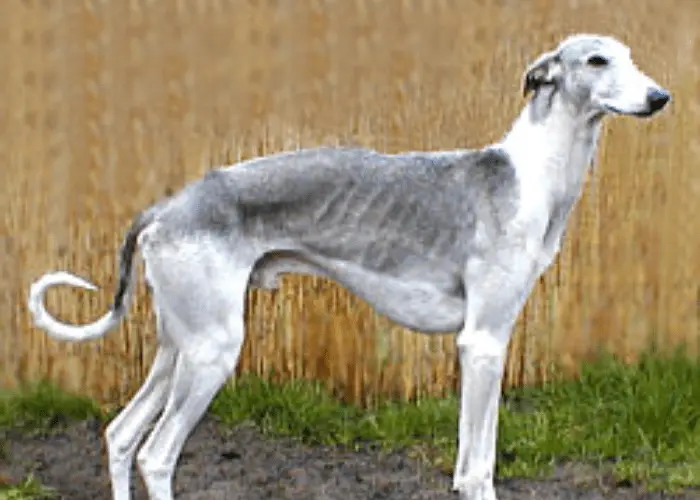
The Chortai, or Chortaj, is a sighthound breed of Russia and Ukraine. The Chortai resembles a mix between a Greyhound and a Borzoi. It’s heavily built runners compared to other hounds but displays typical sighthound features.
Did You Know?
- The Chortai ancestors are the now-extinct Krymstaja and Gorskaja breeds and were a favorite breed of the Russian nobility.
- The breed’s numbers reached near extinction, but the rescue was made after the collapse of the Soviet Union.
8. East Siberian Laika
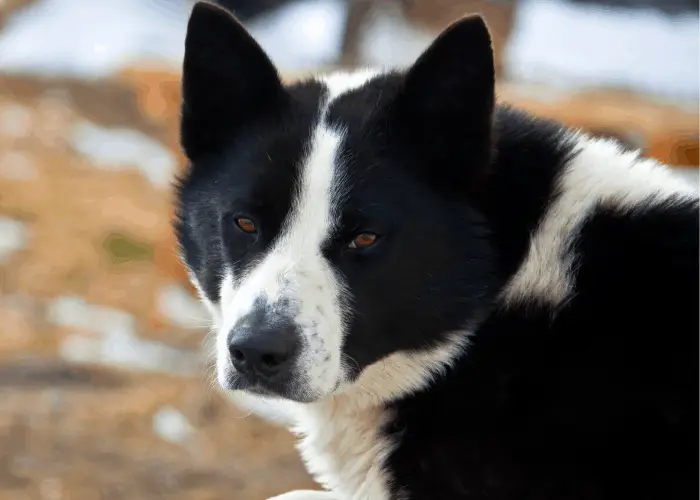
The East Siberian Laika is a hunting dog originating in Siberia east of the Yenisei River.
The East Siberian Laika, a spitz-type dog, was developed many years ago with Chinese and Japanese dogs that arrived in the area by immigrants.
This skilled hunter is calm, territorial, fearless, and intelligent. It also can be stubborn and independent.
Did You Know?
- The East Siberian Laika inherited many traits from its wild ancestor, the wolf.
- There are four Russian Laikas – the Karelo-Finnish Laika, the Russo-European Laika, the West Siberian Laika, and the East Siberian Laika.
- Litter size is quite large, with 6 – 12 puppies.
9. East-European Shepherd
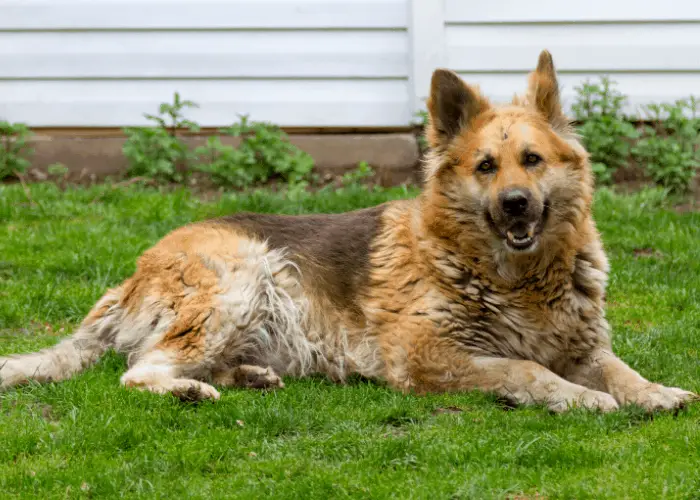
The East European Shepherd, also called Vostochno Evropeiskaya Ovcharka, is a Russian shepherd dog breed.
It was selectively bred from the German Shepherd Dog to create a larger dog guard. The Russian Army and police wanted a guard and sniffer dog to cope with the harsh climatic conditions.
Did You Know?
- The East-European Shepherd is a rare breed outside of its native Russia.
- The breed’s strong prey drive means they are prone to chasing other animals, so they are best kept as lone pets.
- East-European Shepherd is not suitable for a pet.
10. Hortaya Borzaya
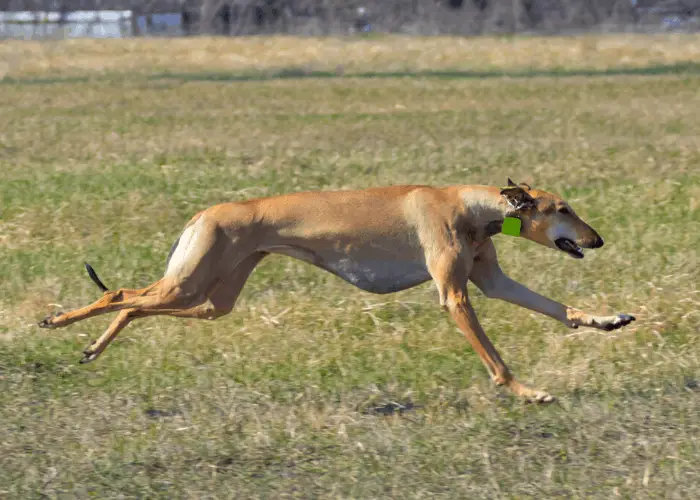
The Hortaya borzaya is an old Asian sighthound breed originating in the former Kievan Rus, later the Grand Duchy of Lithuania, and the Russian Empire.
It is a large, lean dog but robustly built with considerably elongated proportions. Its nature is calm and even-tempered.
All breed standards for Hortaya are performance-based, not appearance-based, but because specific characteristics make for skilled hunting dogs, most Hortaya is very similar in shape and build.
The legs are long, the spine flexible, and the chest disproportionately deep compared to the waist to accommodate large, powerful lungs. They usually have small ears and a long, narrow skull.
Did You Know?
- It has excellent eyesight and can spot moving objects from far away.
- The breed has five distinct types, with at least as many subtypes as each primary type.
- It is usually heavier than it looks.
11. Moscow Watchdog
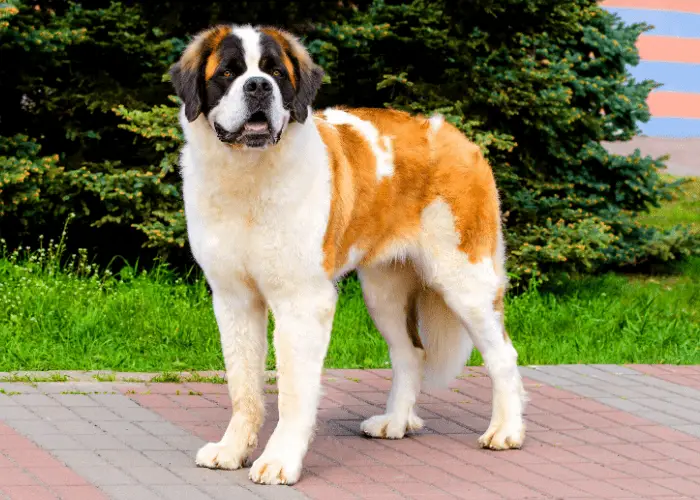
The Moscow Watchdog is a breed of dog bred in the Soviet Union. It descends from crosses between St Bernard and Caucasian Shepherd breeds.
It contains the physical size, attractiveness, and intelligence of a St Bernard and the awareness and strong protective instincts of a Caucasian Ovtcharka.
Did You Know?
- The Moscow Watchdog is red and white.
- It’s well-known in Russia but not known much in other countries.
- This dog is not affectionate but is calm and patient.
12. Moscow Water Dog

The Moscow Water Dog, also known as the Moscow Diver, Moscow Retriever, or Moskovsky Vodolaz, is a little-known breed derived from the Newfoundland, Caucasian Shepherd Dog, and East European Shepherd.
It is now extinct but was used in developing the Black Russian Terrier.
The Russian government commissioned the breed and developed it through the Russian Navy to make the ultimate rescue dog.
By combining the Newfoundland, the Caucasian Shepherd Dog, and the East European Shepherd, the Russian Navy created a large breed with a heavy double coat that could withstand rough weather and cold water.
Sadly, the dog also had an aggressive nature and was more inclined to bite drowning victims than rescue them. So the Russian Navy canceled the breeding program.
Did You Know?
- There were never many breeds of these dogs.
- It was last seen around the 1980s.
- The average lifespan for the Moscow Water Dog was probably between 8 and 12 years.
13. Russian Spaniel

After World War II, the Russian Spaniel was first standardized in 1951 in the Soviet Union by cross-breeding English Cocker Spaniels, English Springer Spaniels, and other spaniel breeds.
Physically it is similar to a Cocker Spaniel but has a shorter, tighter coat and a longer body.
It is a strong hunter capable of seeking out the bird, bringing it up into the air, and after the shot and on command to retrieve the game. They can also hunt rabbits and other small game.
Did You Know?
- This dog is small but very strong.
- They make great pets as well as hunters.
- The Russian Spaniel needs lots of exercises
14. Russian Toy
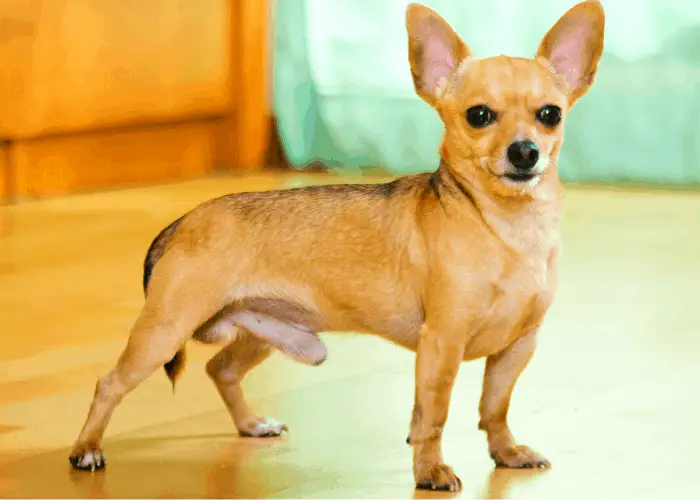
Russian Toys are tiny dogs originally bred from the English Toy Terriers introduced in the 18th century.
Russian Toys possess a sweet personality, high energy, and high intelligence.
This intelligent dog has two types of coats: smooth and long. The smooth-coated kind was previously known as the Russian Toy Terrier, and the one with the long coat as the Moscow Long-Haired Toy Terrier.
Did You Know?
- This elegant dog loves to snuggle and please their owner.
- Early socialization is a must for this breed as they can be very territorial and possessive of their owners.
- These “little dogs” can be standoffish to strangers.
- Despite their small size, Russian Toys make excellent watchdogs.
- The Russian Toy dog has a lineage that dates back to the Russian aristocracy.
- As of 2022, the Russian Toy is now fully recognized by the American Kennel Club in the United States in the Toy Group after three years in the Miscellaneous Class
15. Russo-European Laika
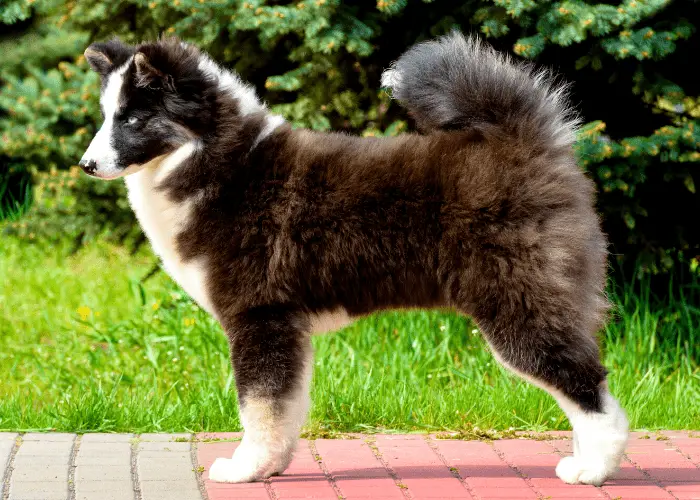
The medium-sized Russo-European Laika is the name of a breed of hunting dog that originated in northern Europe and Russia.
The Russo-European Laika dates back to a breeding program that started in 1944. This devoted dog is an impressive hunter and guards dog and pet for many people.
Did You Know?
- It is often mistaken for a Karelian Bear Dog as they look so similar.
- It is very willing to learn and flexible to train.
- This breed is very healthy and not prone to disease as dogs go.
16. Sakhalin Husky

The Sakhalin Husky, also known as the Karafuto Ken, is a breed of dog previously used as a sled dog, but unfortunately, it’s now extinct.
As of 2015, only 7 huskies were left on their native Sakhalin island. In 2011, only two surviving purebred breed members were in Japan.
Did You Know?
- They have large paws to help them run in the snow.
- They are strong enough to pull 70 kg of weight through the snow.
- Groups worked hard to prevent its extinction.
17. Samoyed
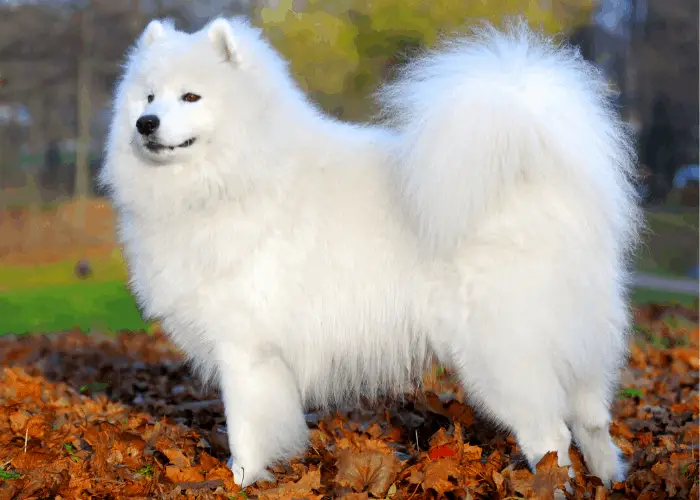
The Samoyed comes from a line of large herding dogs with thick, white, double-layer coats. It takes its name from the Samoyedic people of Siberia. The nomadic reindeer herders bred the fluffy white dogs to help with herding.
The Samoyed is a friendly and loyal dog with a strong will and determination. It makes a beautiful family dog.
It has a very thick coat. Samoyed “wool” is in demand by weavers who make beautiful wool clothing. With this comes much shedding, grooming, and cleaning up the hair.
Did You Know?
- The Samoyed is hypoallergenic.
- Because of their playful nature, everyone should be cautious of vulnerable family pets or young children.
- In Siberia, they would keep their owners warm from the cold climate by sleeping on top of them.
- “Sammy Smile” is its nickname due to its upturned mouth resembling a smile.
18. Siberian Husky
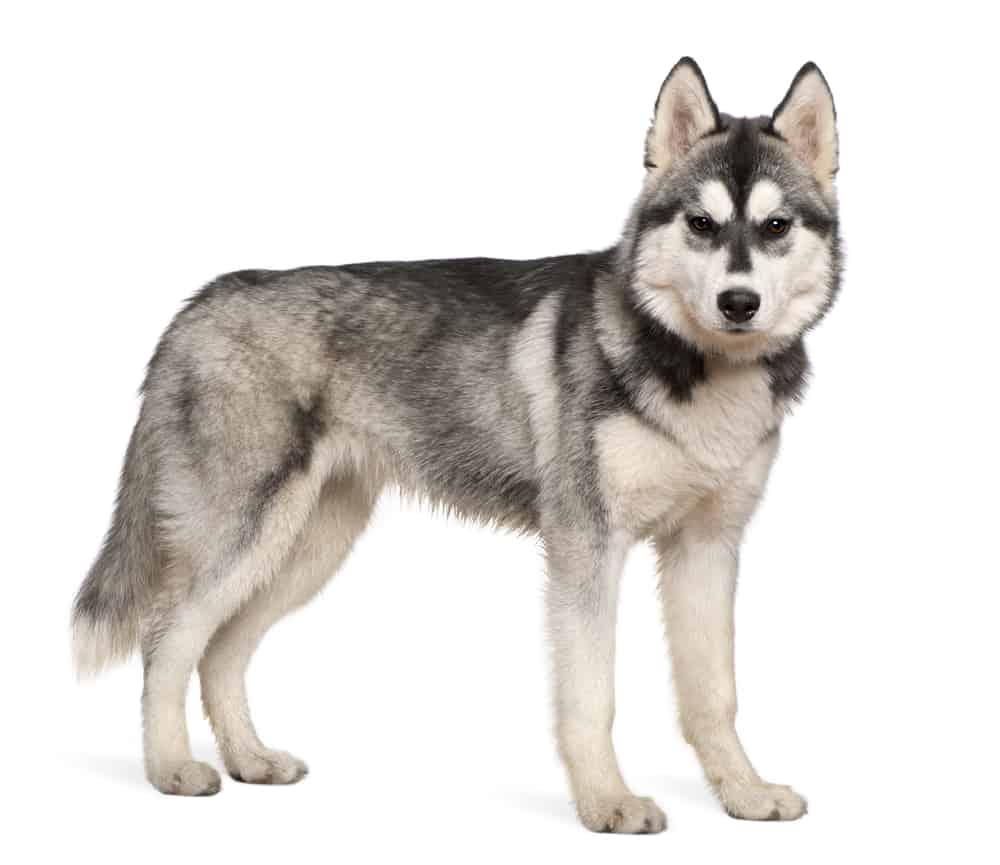
The Siberian Husky is a medium-sized working dog breed in Northeast Asia, where the Chukchi people breed them.
These energetic dogs belong to the Spitz genetic family. It is known for its bright blue eyes, thick double coat, erect triangular ears, and distinctive markings.
Did You Know?
- They like to escape home to explore and are experts at getting away.
- They are hard to handle and need a strong master to control them. As such, positive reinforcement is required to train them effectively.
- Siberian Huskies can be destructive if left alone.
- Siberian Huskies can withstand cold temperatures as low as -51 degrees C
- These active dogs were bred to work as sled dogs.
RELATED ARTICLES:
- Do Huskies make good service dogs?
- Do Huskies Shed?
- Why Do Huskies Talk?
- Alaskan Klee Kai vs. Siberian Husky Differences
19. South Russian Ovcharka
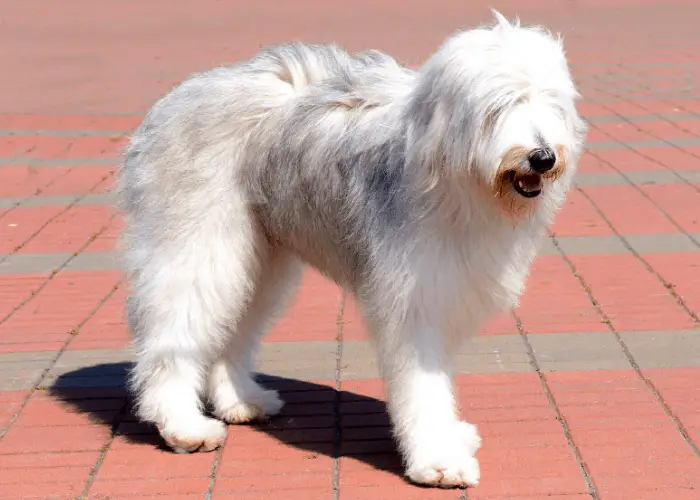
The South Russian Ovcharka, also known as a Ukrainian Shepherd Dog or South Russian Sheepdog, is from the Ukrainian steppes between the Black Sea and the Sea of Azov.
This undemanding dog can adapt to most weather conditions and has a woolly coat to help keep it warm.
They are strongly protective of their home and family, so they are often used as guard dogs in Ukraine and Russia. They need plenty of exercises, and if not used as working dogs, they must have access to many fenced-in lands to roam around.
Did You Know?
- It is often confused with the bigger Caucasian Ovcharka, a different breed.
- Its history is unclear, but the South Russian Ovcharka is likely closely related to the wolf and has undoubtedly been crossed with several shepherding and sighthound dogs along the way.
- They need a very experienced trainer who can handle their strong-minded nature.
20. Sulimov Dog
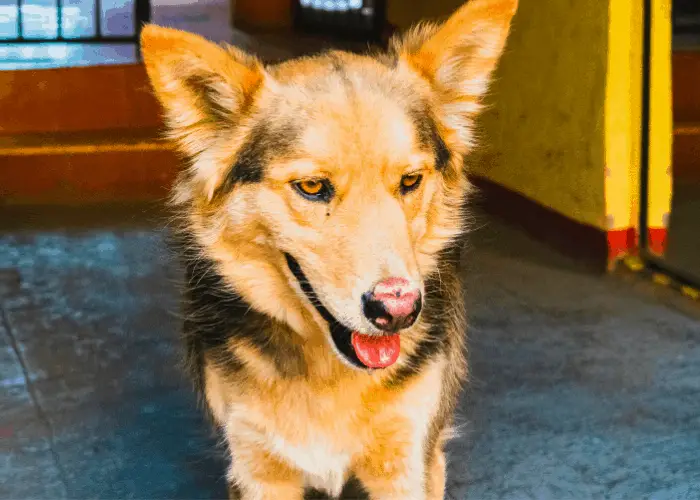
The Sulimov dog, also known as the Shalaika, is a jackal-dog hybrid originating in Russia from an initial hybrid between two Lapponian Herders and two Turkmen golden jackals.
Klim Sulimov developed the breed for Aeroflot Airlines. The breed has mainly been used for airport security as sniffer dogs.
Their breeding program can be traced back to 1975. At the start of the breeding process, male jackal pups had to be fostered on a Lapponian Herder bitch to imprint the jackals on dogs.
Female jackals accepted male dogs more easily. The half-breed jackal dogs were challenging to train and were bred back to Huskies to make quarter-bred hybrids (quadroons).
Other dogs were bred into the line to improve trainability: a reindeer herding hound, a fox terrier, and a Spitz.
These hybrids were small, agile, and trainable and had strong noses. The jackal-dog hybrids were bred together for seven generations to establish the breed.
An easily trainable dog with a superior sense of smell was named Sulimov after their creator.
Did You Know?
- 25 Sulimov dogs are used by Aeroflot at Sheremetyevo Airport in Moscow for functions that include bomb sniffing. They may one day be registered as a working dog breed, but at present, only about 40 Sulimov dogs exist, and all are the property of Aeroflot.
- Sulimov said: “My dogs combine the qualities of Arctic reindeer herding dogs, which can work in temperatures as low as −70°C, and jackals which enjoy the heat up to +40°C. They’re perfect for our country.”
21. Taigan Dog
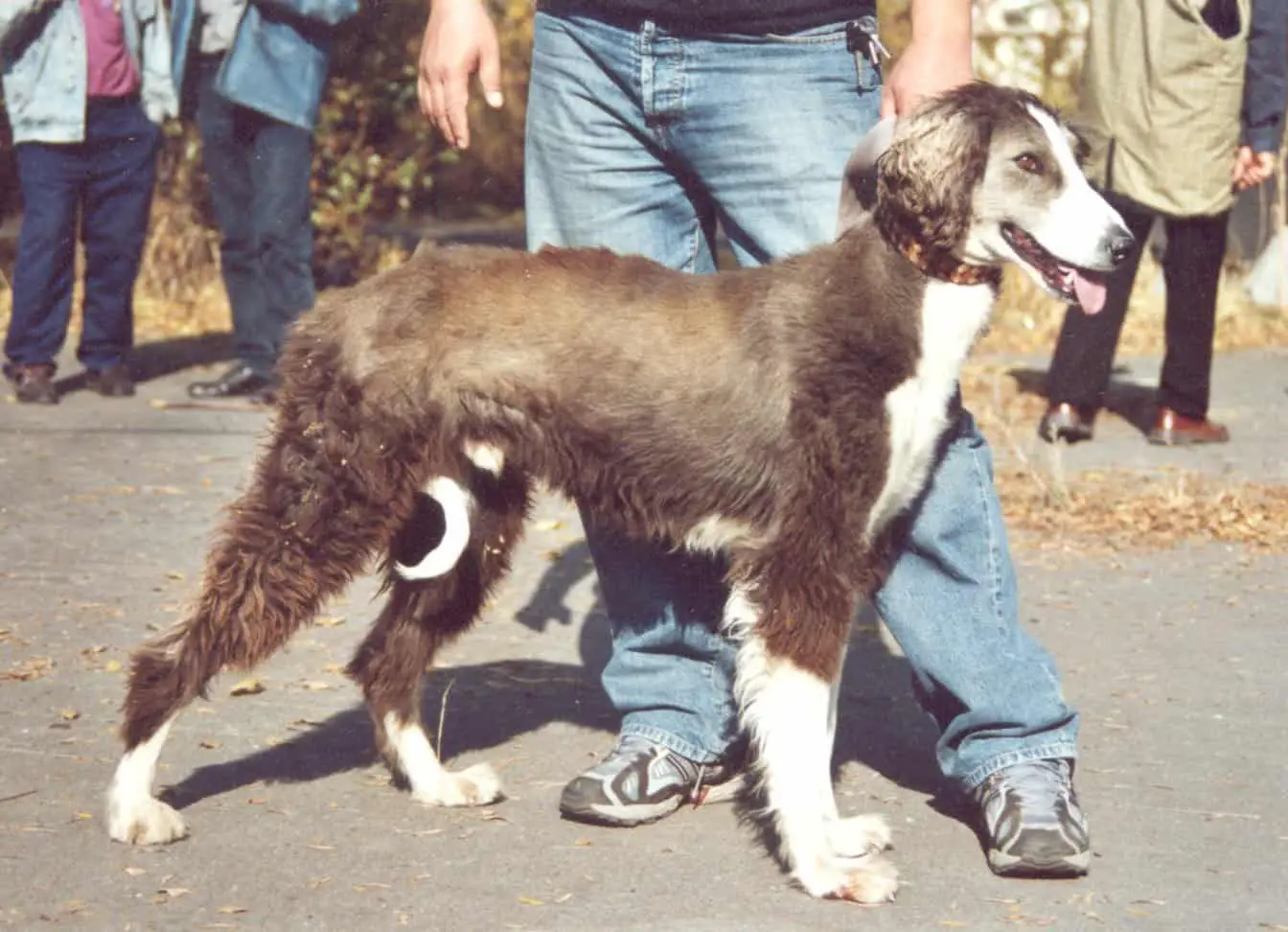
They are extremely dignified, intelligent, and like to think for themselves. Rather than seeing themselves below their masters, they want to think of themselves as “on par” and demand to be treated respectfully and fairly.
The origins of the Taigan can be traced back to the indigenous people of Kyrgyzstan. They have long been bred and used for their excellent hunting and guarding skills.
After many years, the Taigan lived with the nomadic tribes, journeying through Central Asia and Siberia’s rough and rugged terrains.
Sadly, when the need for guarding dogs wore down, so did the population of the Taigan.
It was not until 1964 that the USSR laid standards for the breed, and since then, their popularity has again begun to incline.
Did You Know?
- To date, the Taigan is not recognized by any Kennel Clubs in the US
- The Taigan can run up to 60km/hr!
- Taigan’s name means undying, inextinguishable, and imperishable.
22. West Siberian Laika
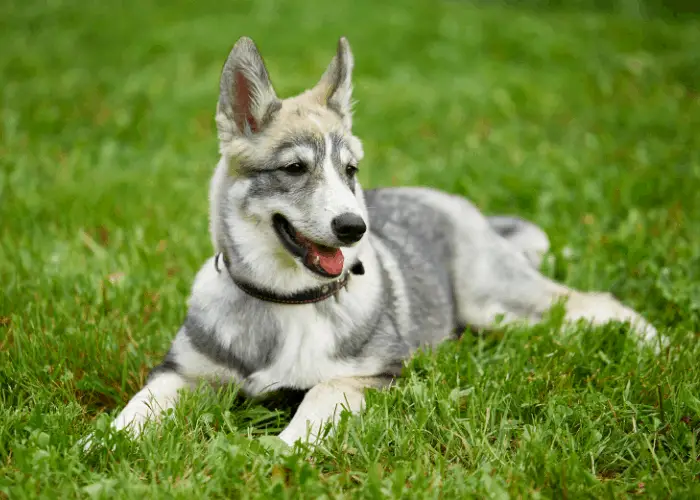
The West Siberian Laika is a sturdy, big dog with a strong wolf-like appearance and wears a very dense and harsh coat.
The West Siberian Laika is similar to its cousin, the East Siberian Laika but has a stronger prey drive and a slightly bigger body.
Along with the East Siberian Laika, the West Siberian Laika directly descends from the wolf. The West Siberian Laika has a strong sense of direction and can track small and large game for long distances.
There are four Laika breeds:
- Karelo-Finnish Laika,
- Russo-European Laika,
- East Siberian Laika,
- and West Siberian Laika.
The Laika dates back to ancient times, classified as an aboriginal primitive hunting dog.
It descends from the wolf and retains much of the wolf’s appearance and hunting instinct.
Did You Know?
- It usually can make a good family companion as long as he has plenty of time to play and has a job to perform daily.
- West Siberian Laika is a high-energy dog that needs at least 100 minutes of exercise daily.
- They have a strong distrust of strangers.
- They need to be well socialized from puppies.
23. Yakutian Laika

The Yakutian Laika is a newly-developed dog breed with a long history originating in the Yakutia region of Russian Siberia.
Native Yakute people used them for hunting, reindeer herding, draft animals, and pets. By the 1900s, numbers dwindled. Then, in 1998, a group reclaimed the breed and was recognized by the Russian Cynological Federation. Now they can be seen around the world.
It is an affectionate and lovable dog that is very intelligent. It has a very sensitive nose and ears, making an excellent watchdog but a bit too friendly to be a good guard dog.
Did You Know?
- Their pelts were used in religious ceremonies in the past.
- They have piercing blue eyes.
- It is usually shy around people it doesn’t know.
Final Thoughts
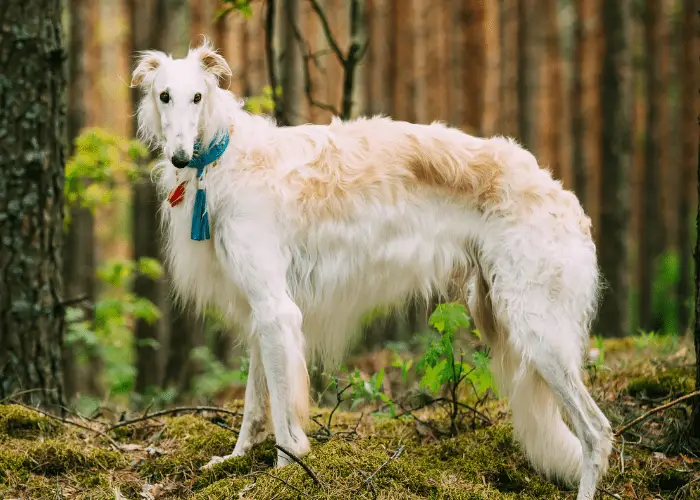
Russian dogs sure have many interesting stories surrounding their breeding and work history.
Many are mainly seen in Russia, so you might not see one in real life unless you visit Russia.
Related Question:
What is a Russian Tracker Dog?

The Russian Tracker or Russian Retriever is an extinct breed of domestic dog. It is uncertain exactly when the breed became extinct, and it could still be found in the late 1800s.
The Tracker was of Asiatic Russian origin. The large dog was used for hundreds of years to protect and herd the flocks of the Indo-Aryan people in the harsh area of the Caucasus Mountains.
Did You Know?
- Legend says it could stay alive with a flock without human contact for many months.
- It could defend flocks of sheep from wolves and other predators very well.
- Its closest surviving descendant is the Golden Retriever.
This article is worth your time; read it now: Popular Asian Dog Breeds

